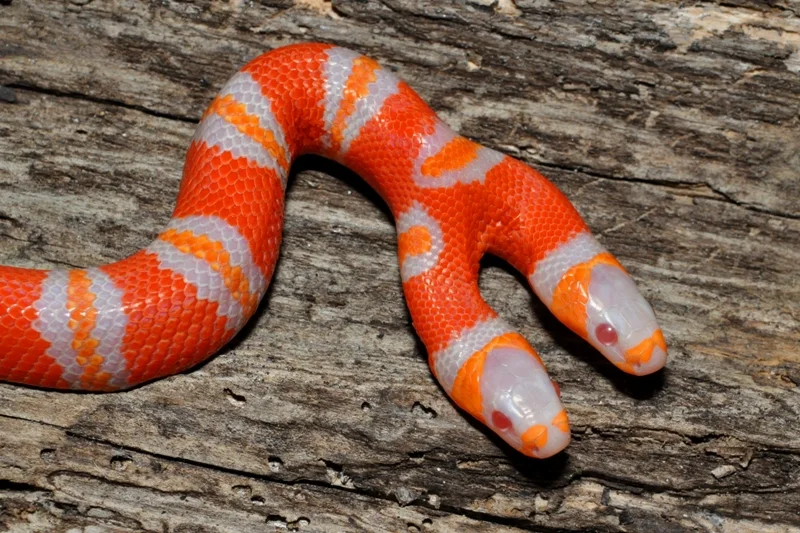

A normal, single-headed snake can give most people the creeps, but add to it another head, and it’s a whole new level of creepiness and added fear.
It almost sounds made up, doesn’t it? But it’s not. As bizarre as it sounds, two-headed snakes do exist.
In fact, two-headed snakes are much more common than any other two-headed creatures.
Two-headed snakes are a result of what is known as bicephaly, meaning the phenomenon of an organism being born with two heads. This is the same process that causes conjoined twins to be born.
The birth of Siamese or conjoined twins occurs when the embryo splits while developing and growing into identical twins, but for some reason does not complete the process of splitting before they are born.
The point at which the embryo stops separating varies with each birth therefore, snakes can be joined at any part of the body. They are thus, two beings that share organs, and one of them is a parasitic head.
Knowing about the life of a two-headed snake has been made possible by studies of captured specimens, although it has been found that just like conjoined humans, the life of most two-headed snakes is also quite difficult.
Two-headed snakes are basically two snakes with a common body, each unaware of the other’s existence.
These species of snake face difficulties which include
- They fight each other for food.
- If one of them eats, both of them feel full, and this causes confusion, for the one that didn’t eat.
- They have two brains, each giving them directions to go in. This again, causes confusion and often results in the dominant one dragging along the other one.
- When attacked, their survival instincts are often different. This causes them to lose time before taking action, and in many cases, costs them their safety.
Thus, survival in the wild is a major issue for two-headed snakes. In captivity, however, they can live up to 20 years, with the right head usually being the dominant head and the decision maker.
Many zoos and circuses have these on show, and certain museums have preserved specimen on display.
Culled / Titilayo Kupoliyi
Subscribe to our Telegram and YouTube Channels also join our Whatsapp Update Group